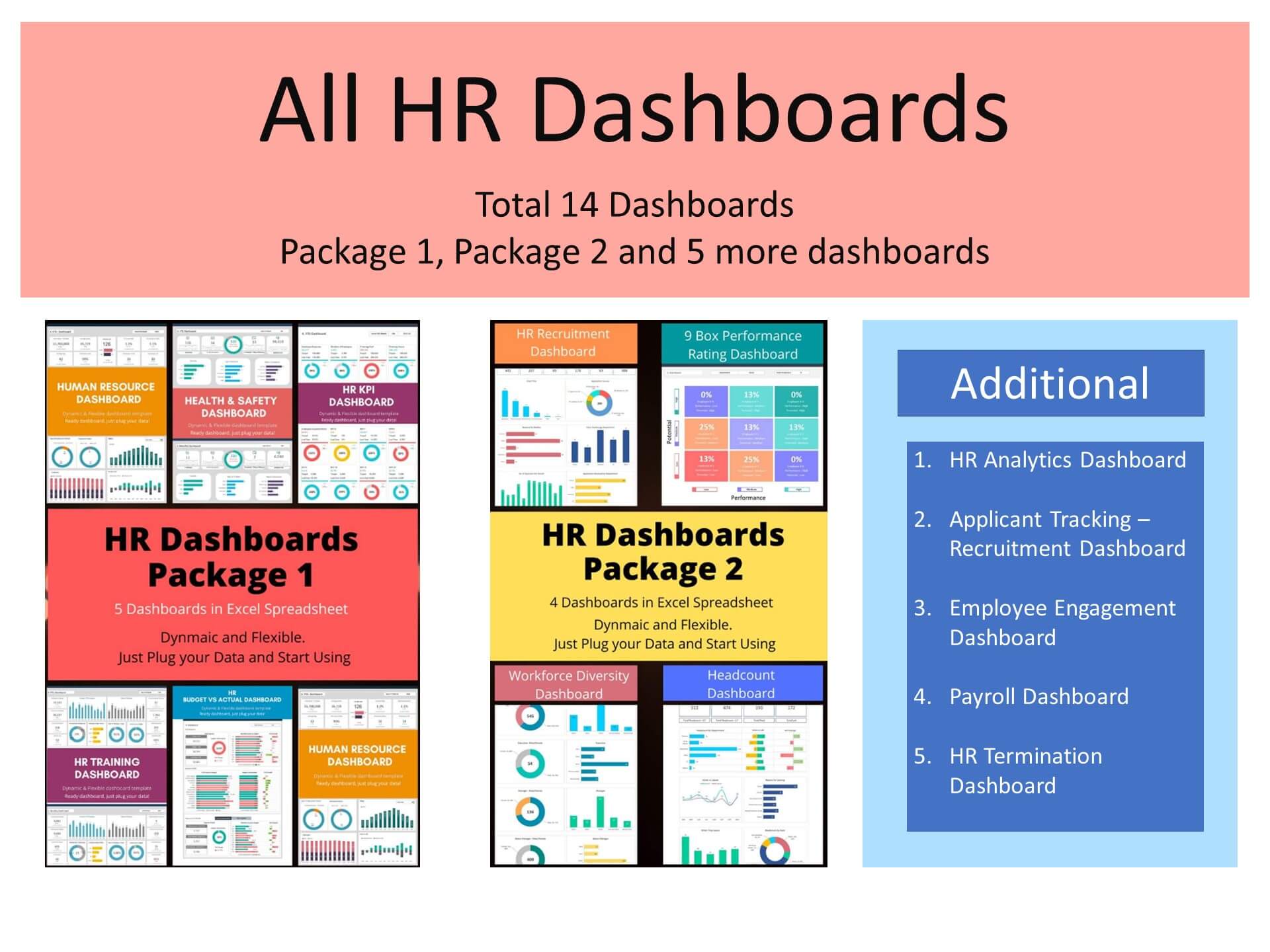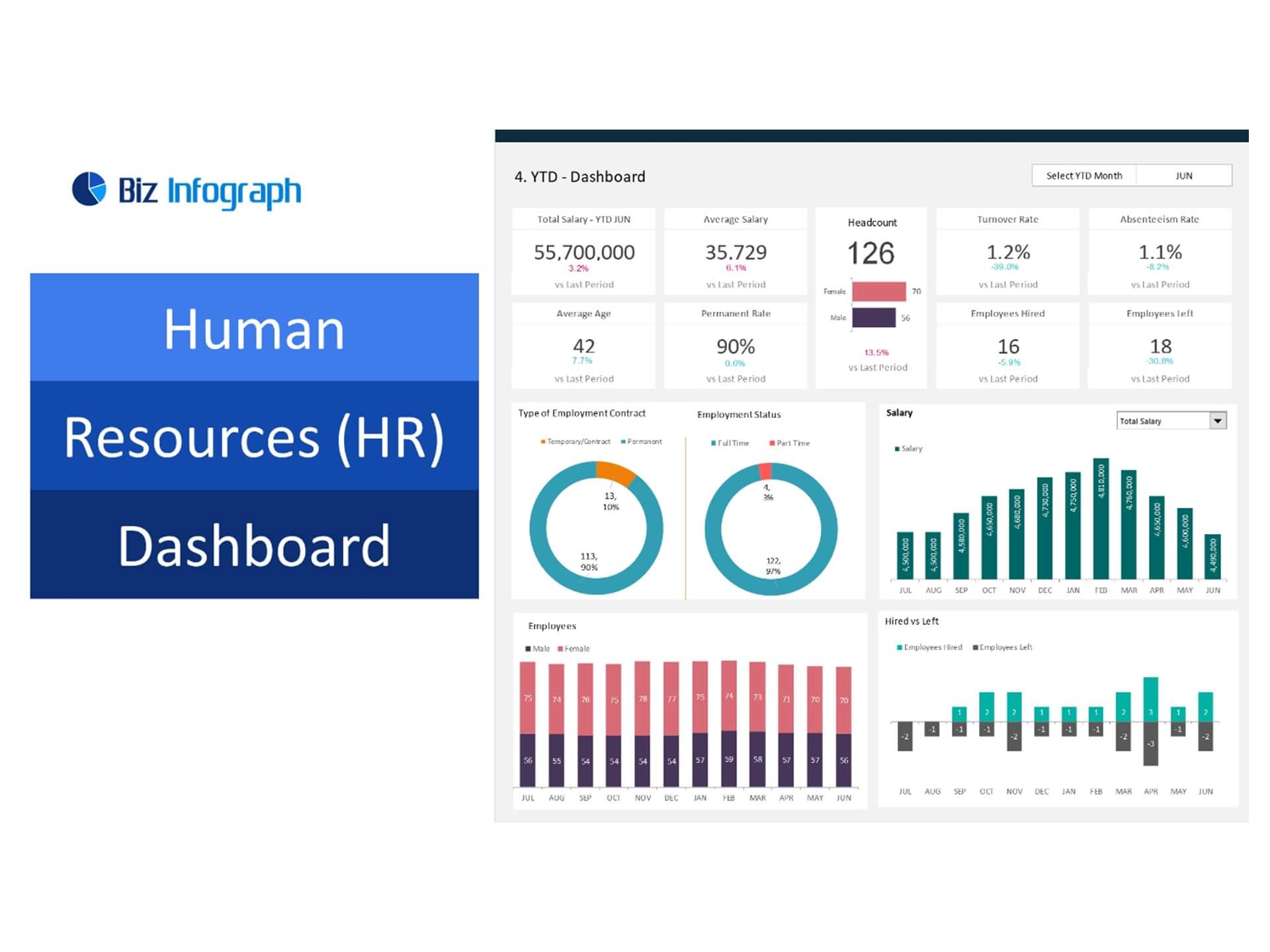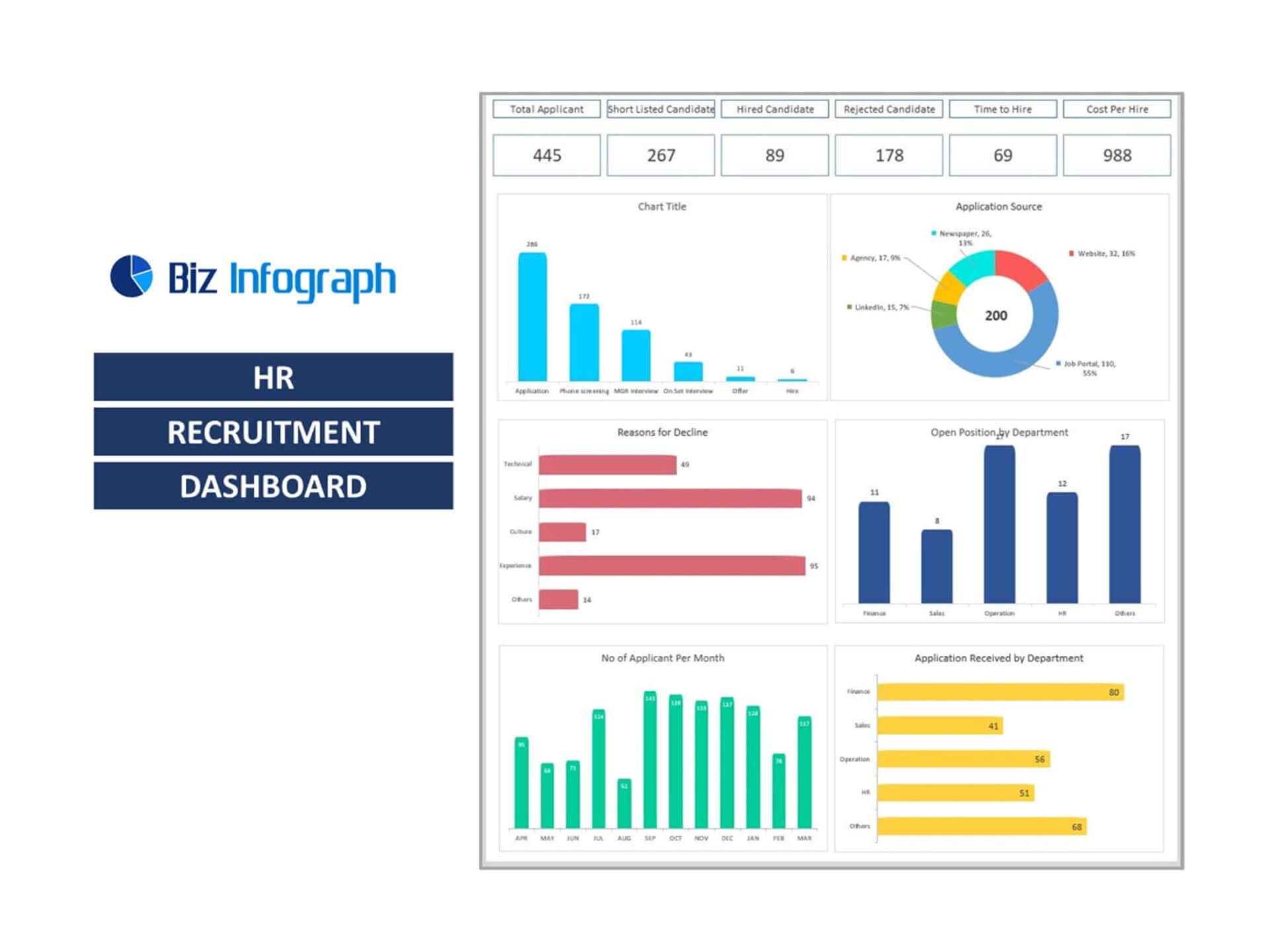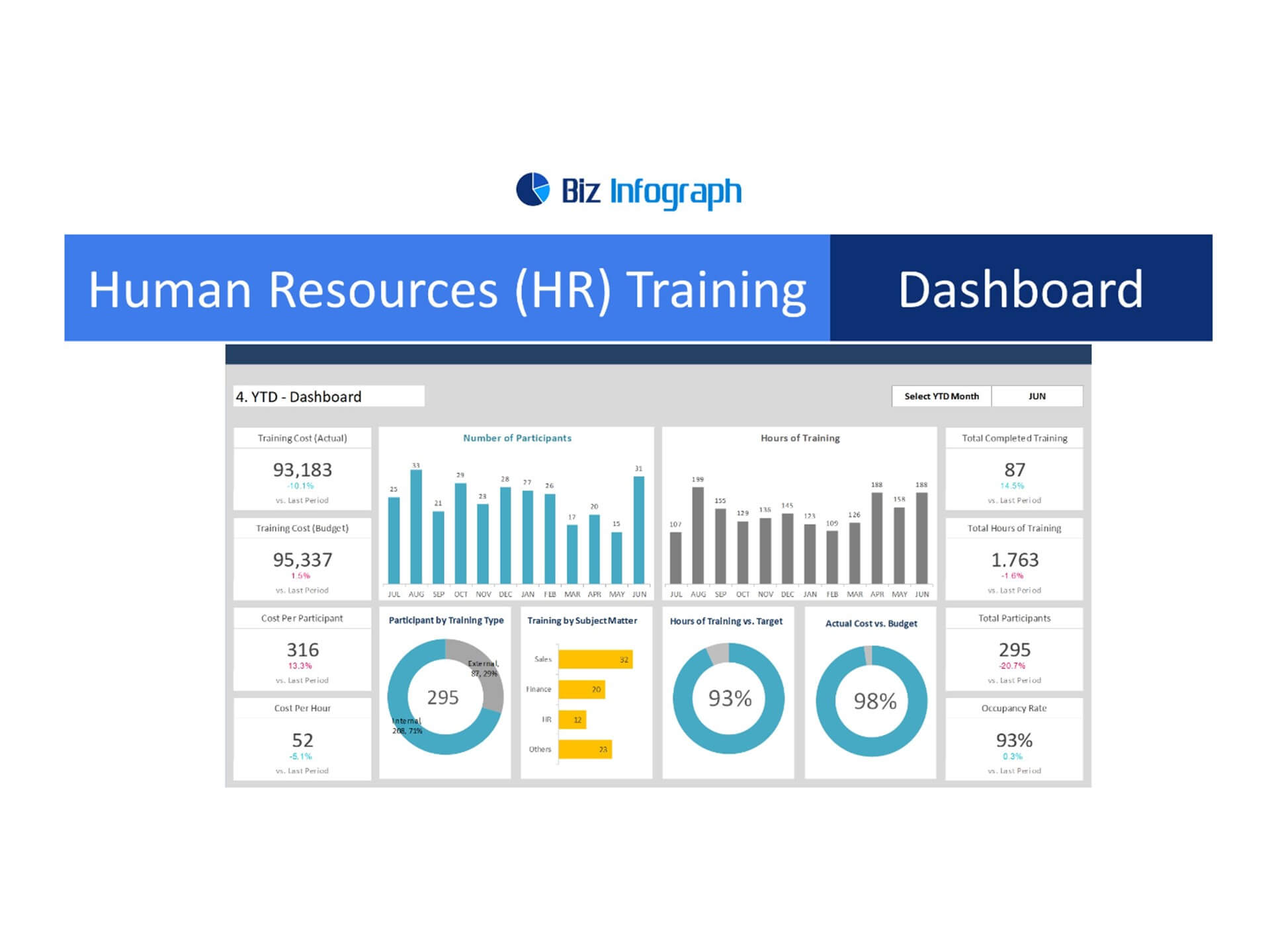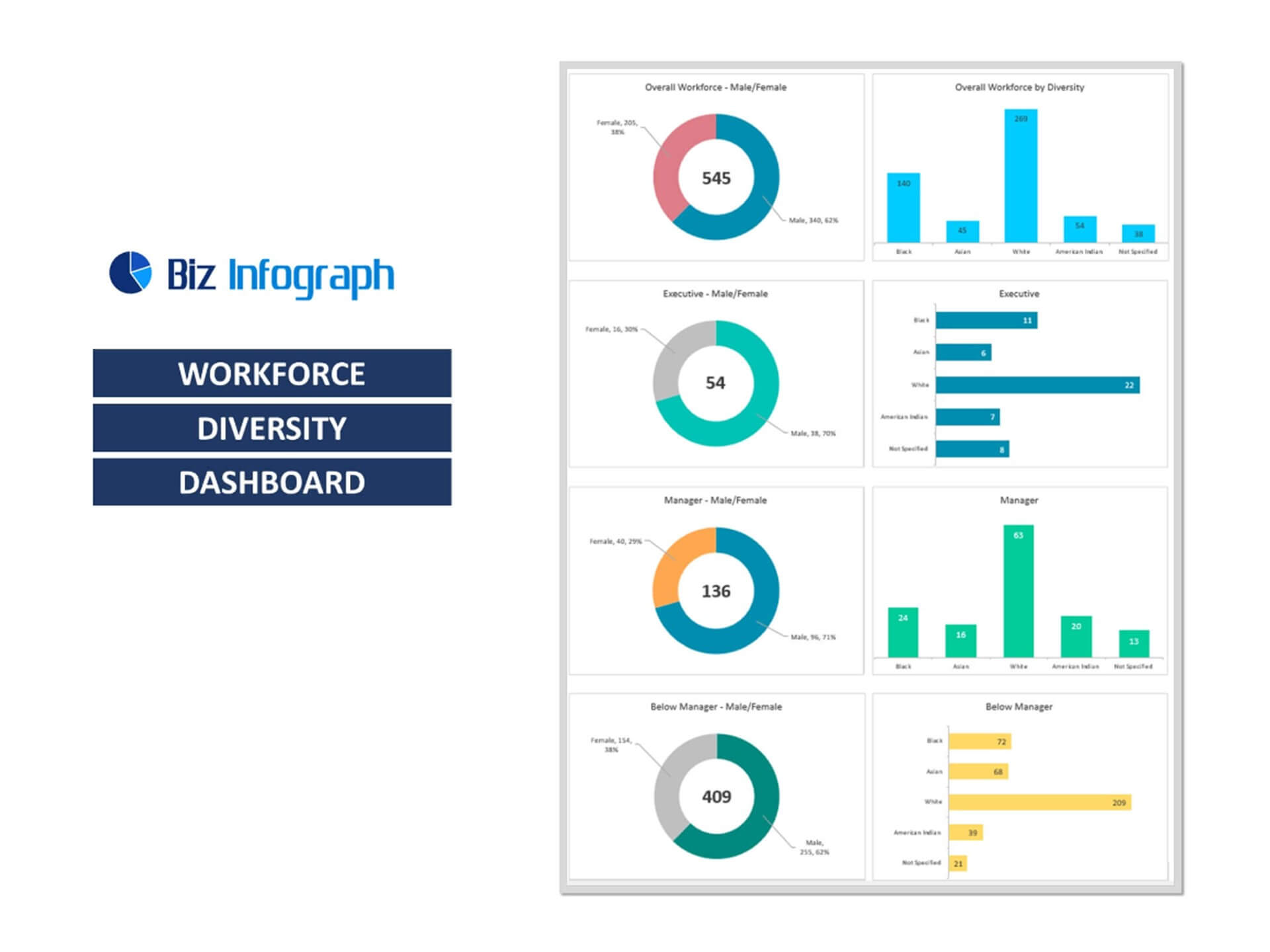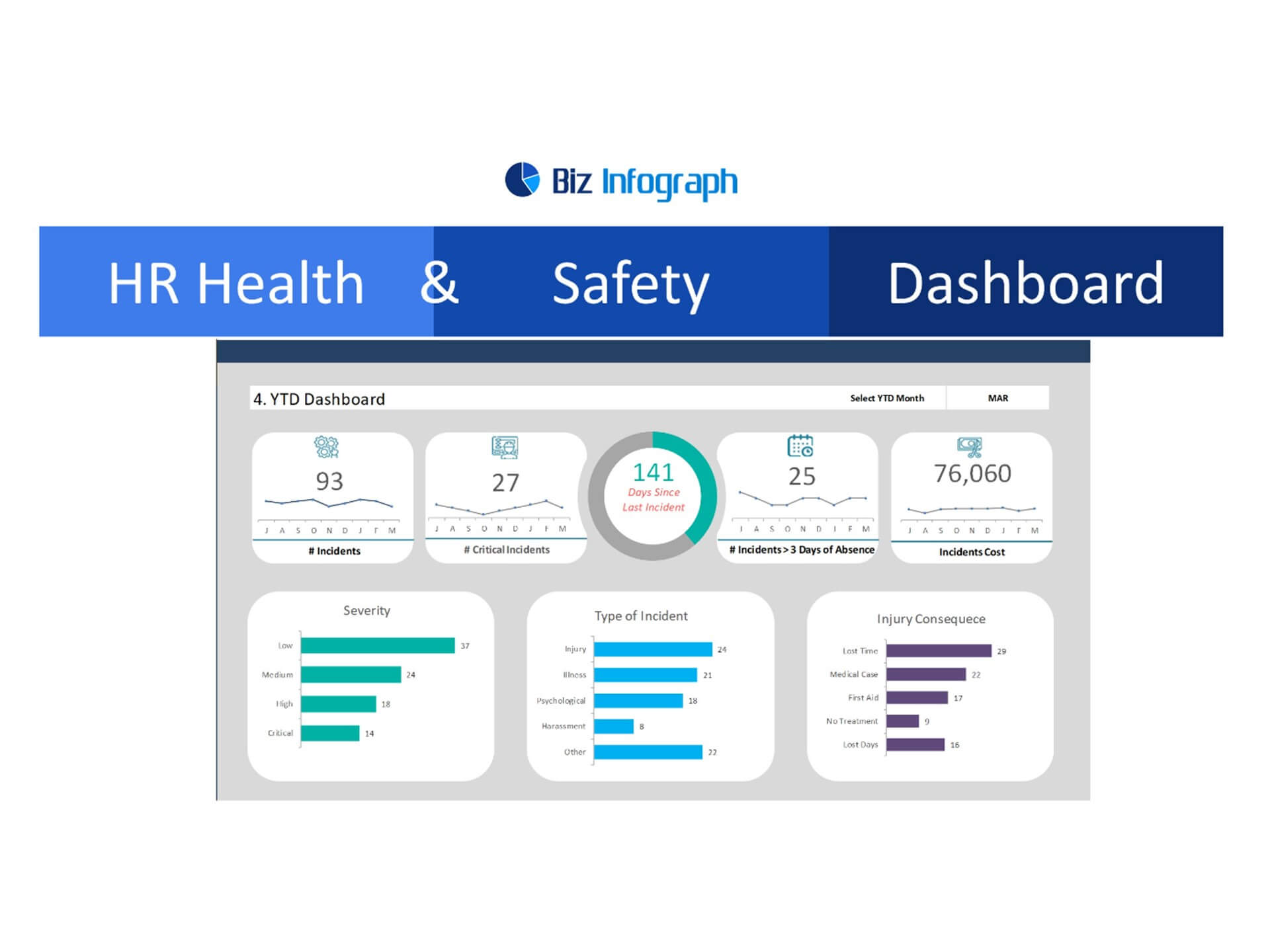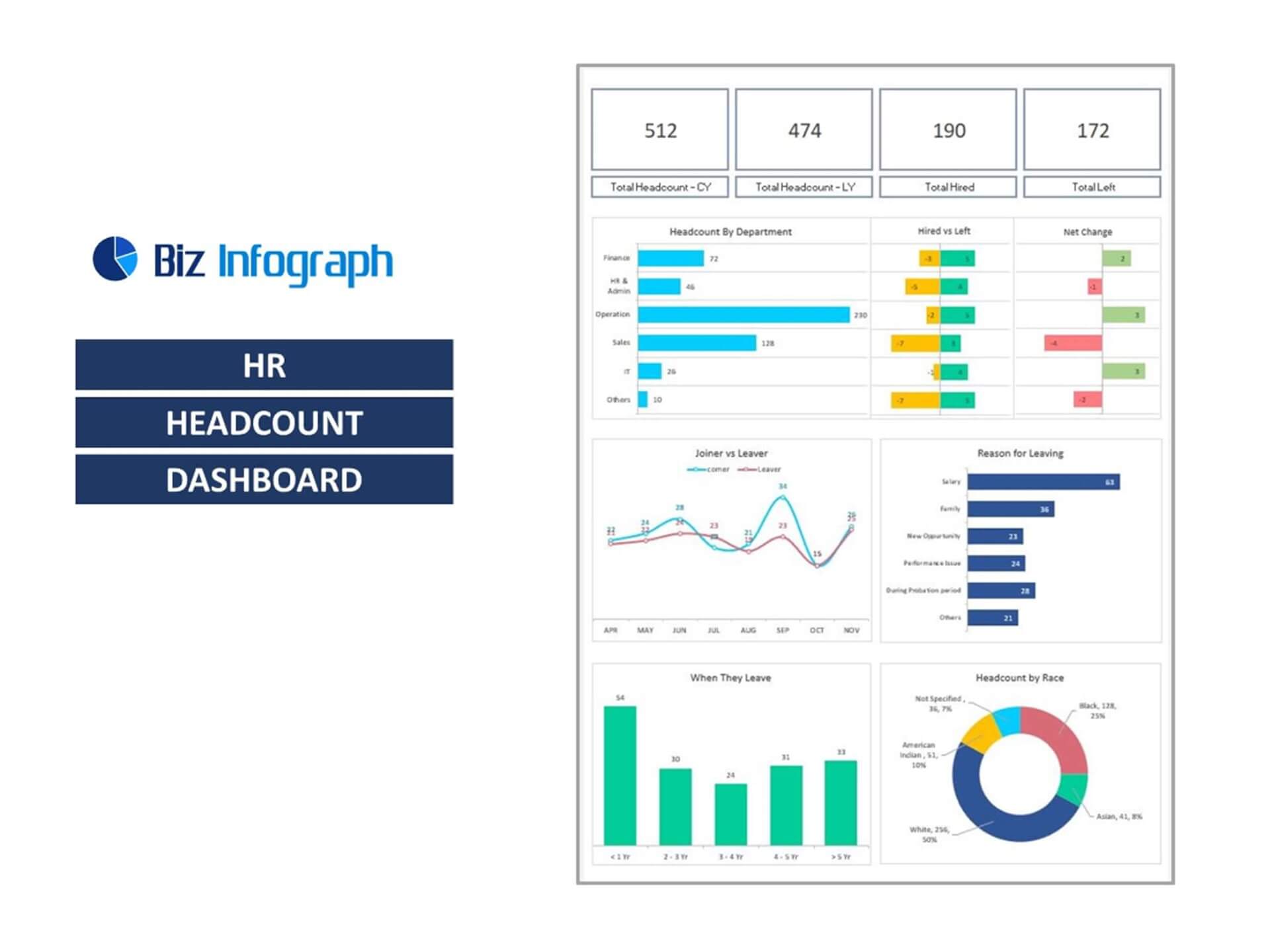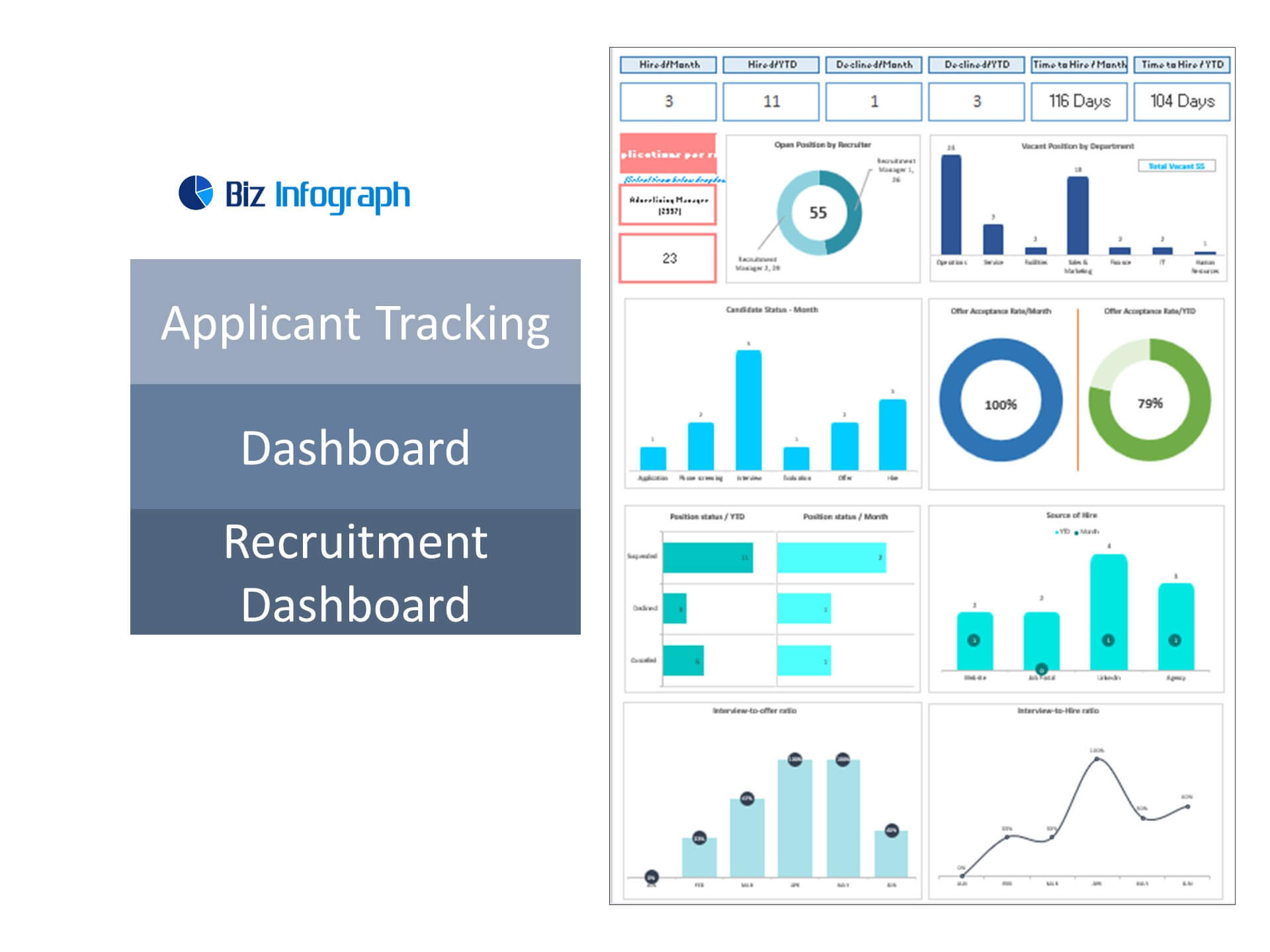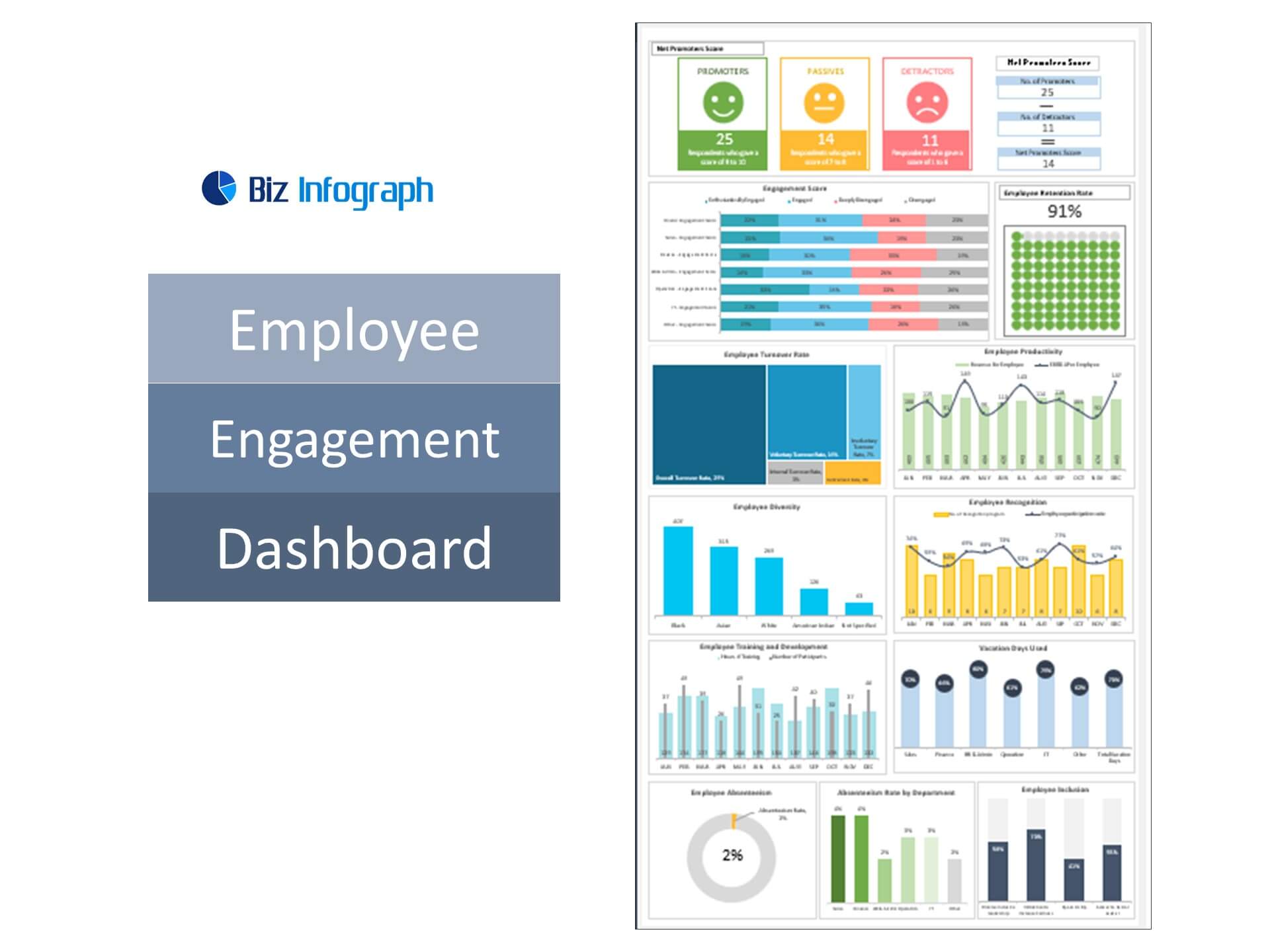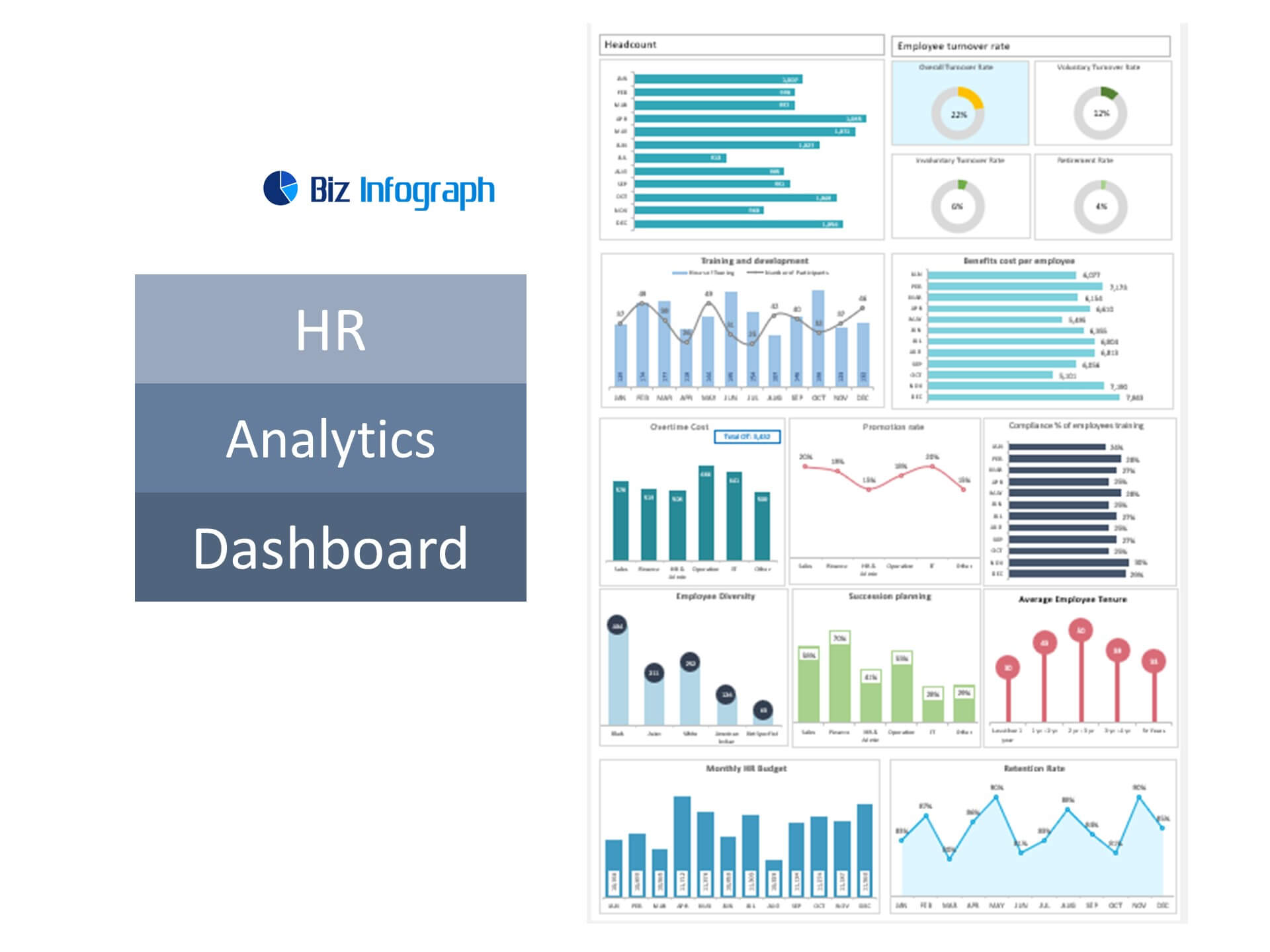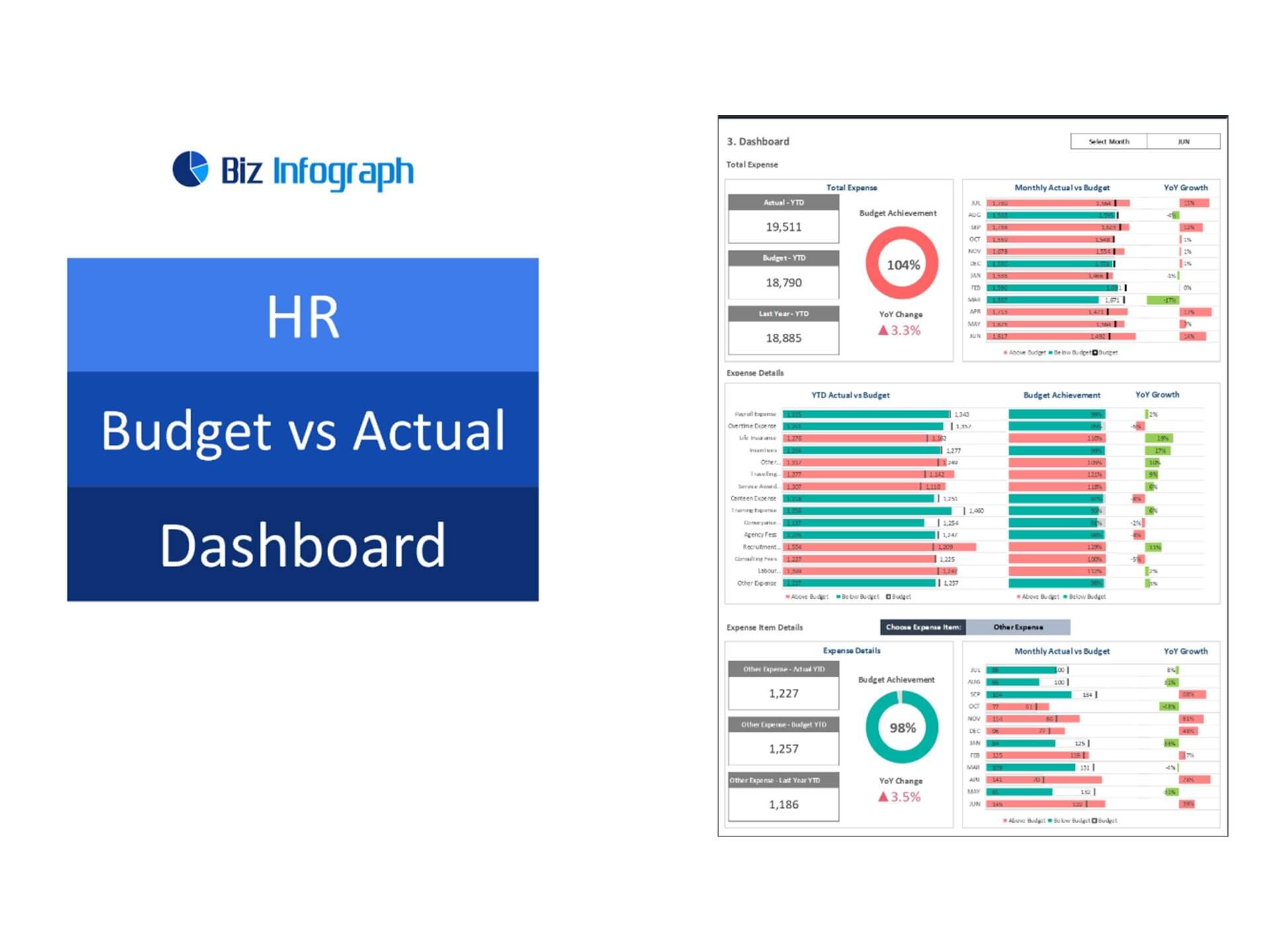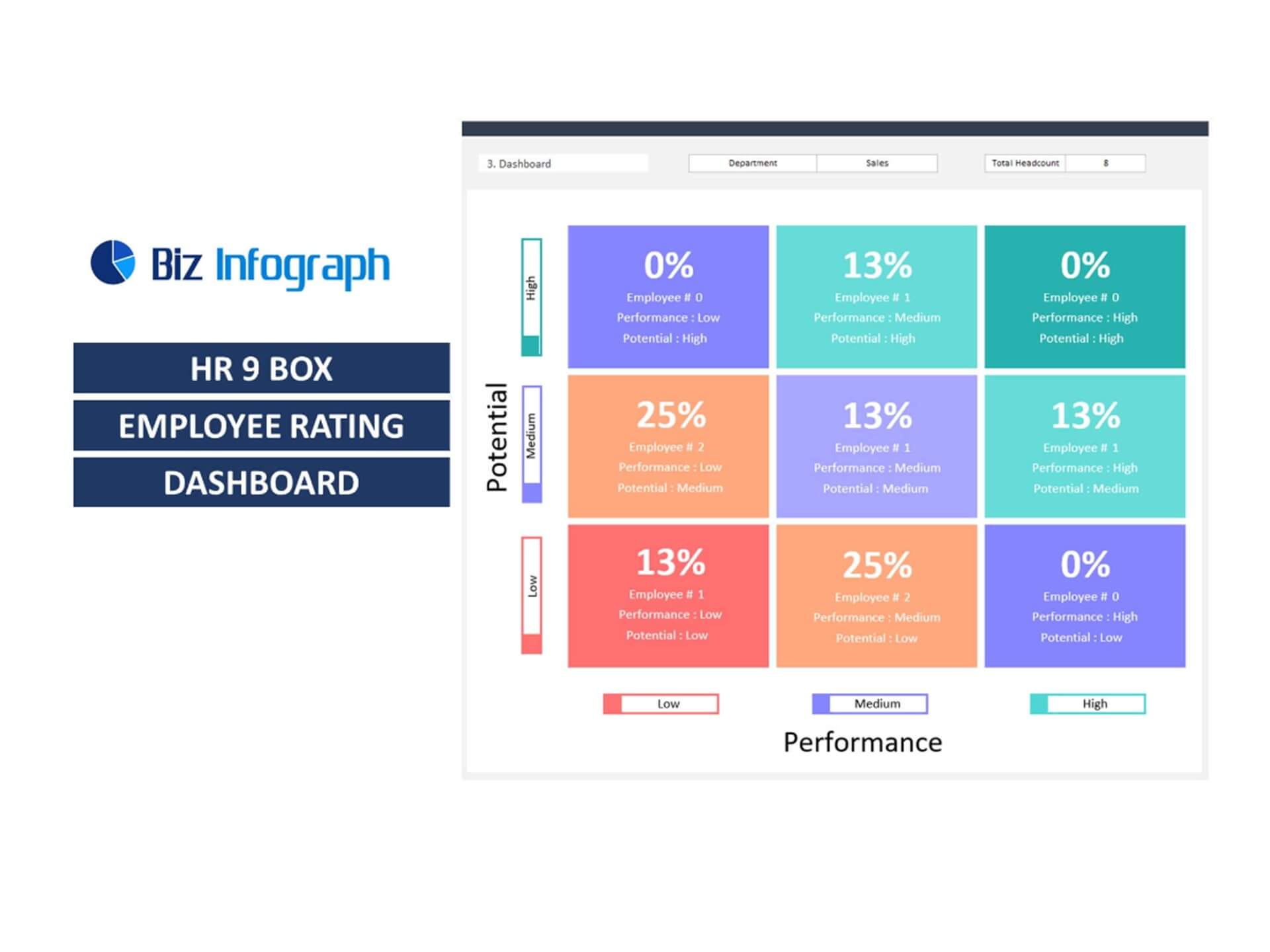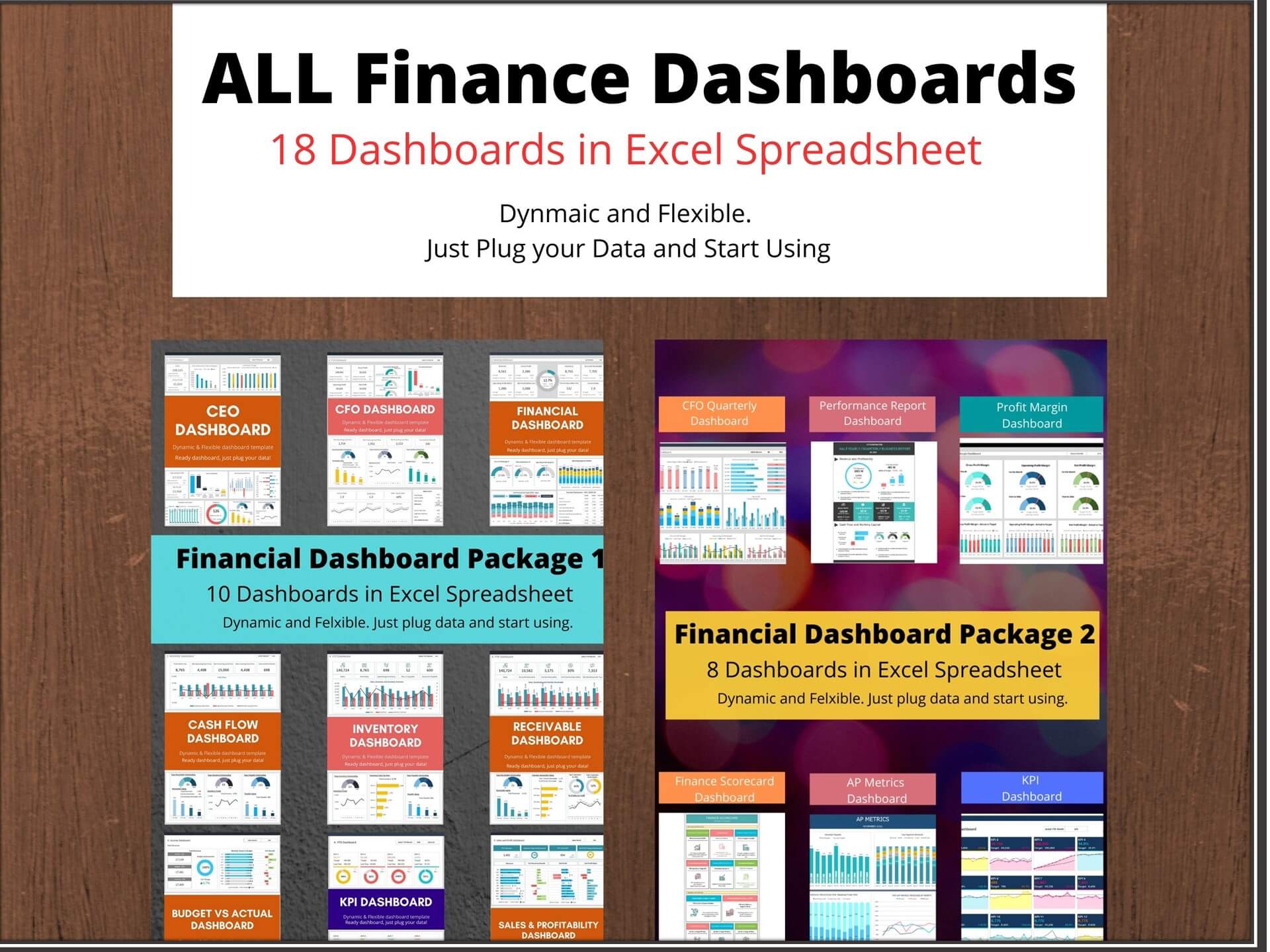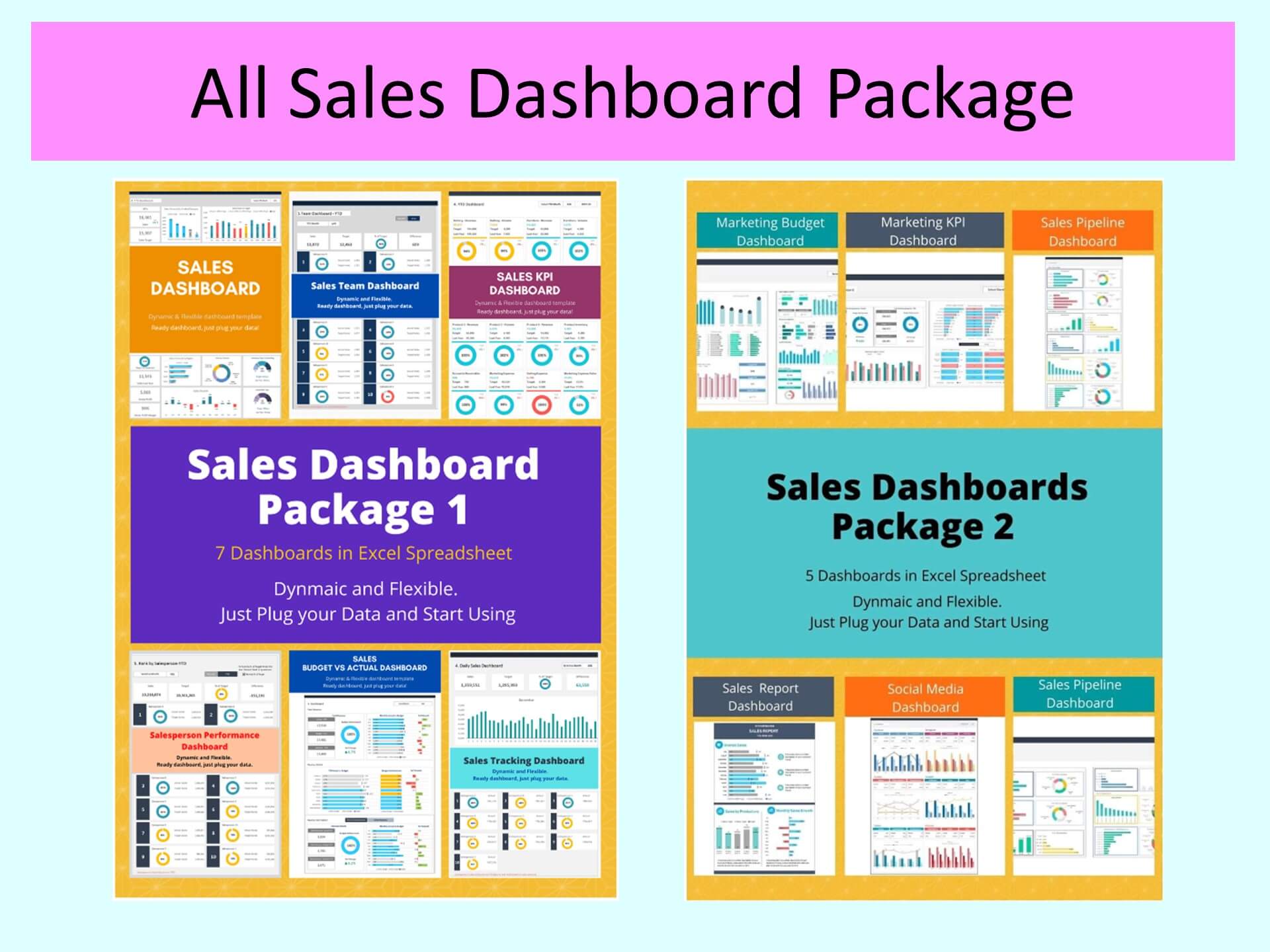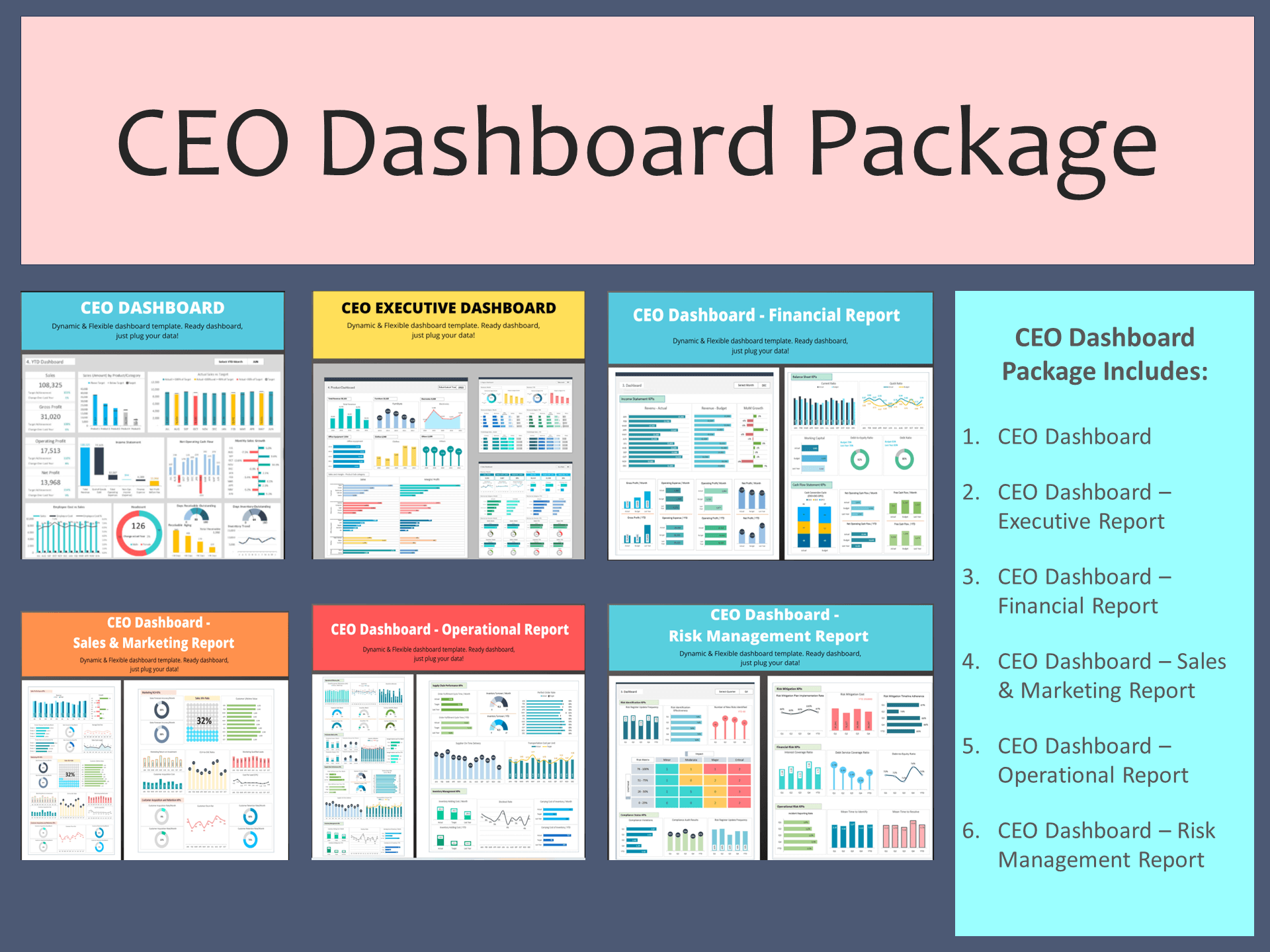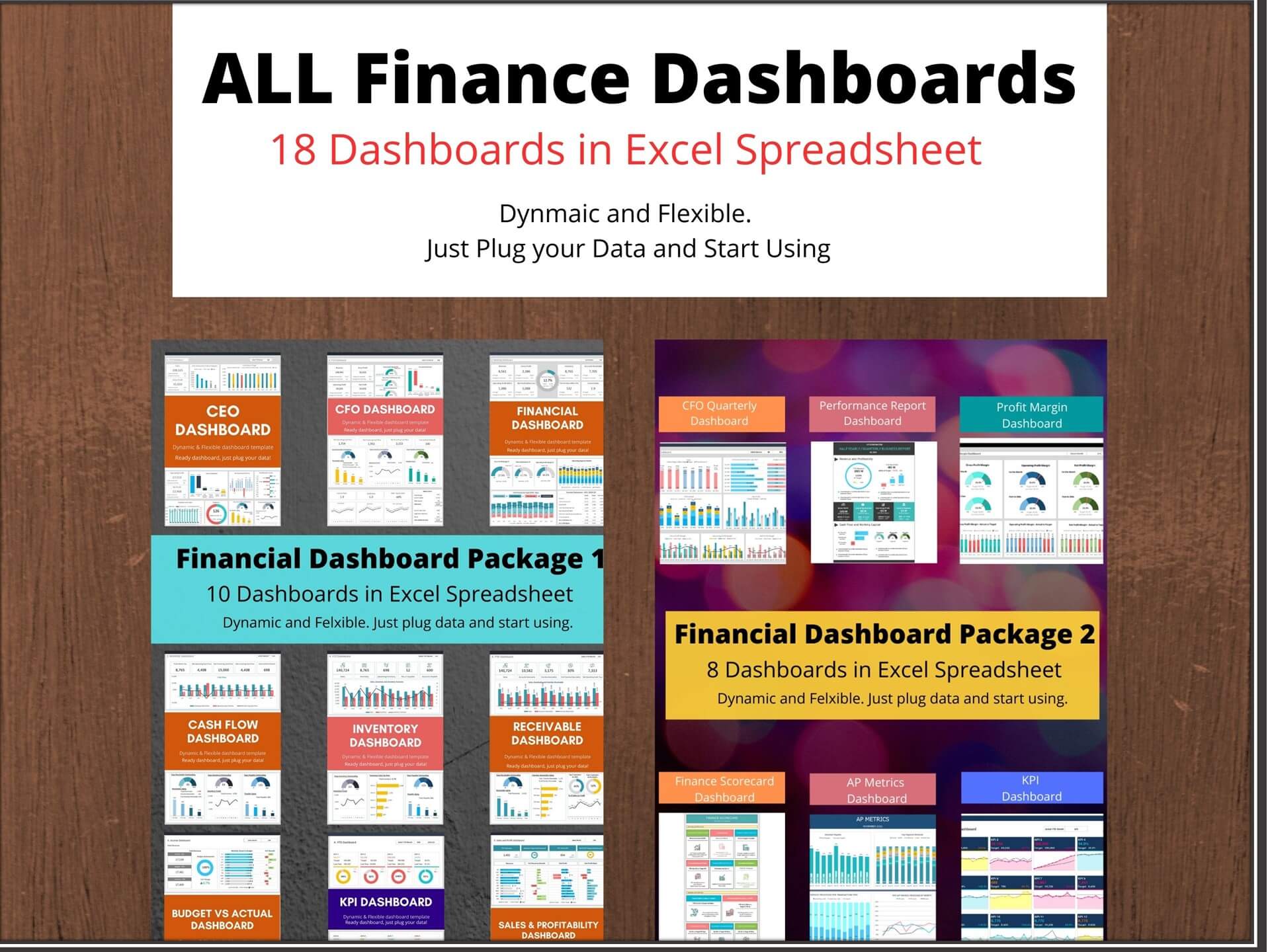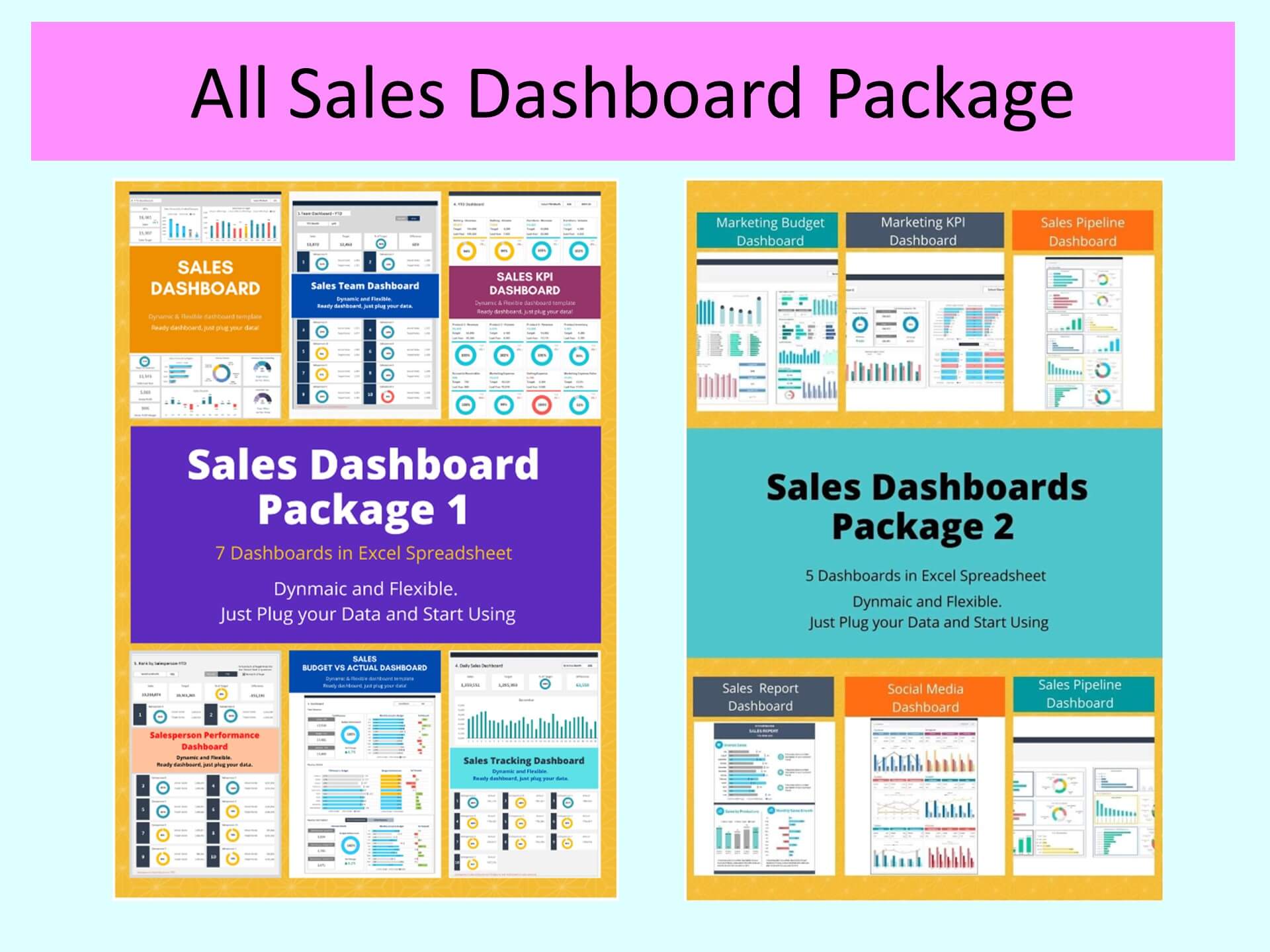Human Resource Dashboard Templates: 14 HR Dashboard Examples to Automate HR Reporting
HR Dashboards package include 14 different Excel Dashboard Templates and Google Sheets Templates that will help you to appropriately organize major human resource indicators in one place. and communicate the most important business information to your CEO, CXO, and team in an eye-catching way. This executive dashboard package visualizes organizational KPIs, metrics, and data.
The objective of the HR dashboard template is to help in tracking all relevant HR KPIs, effectively managing HR expenses, health & safety metrics, and HR training indicators.
HR Dashboard Package 1 includes:
- HR Metrics Dashboard
- HR Budget vs Actual Dashboard
- HR KPI Dashboard
- Health & Safety Dashboard
- HR Training Dashboard
HR Dashboard Package 2 includes:
- HR Headcount Dashboard
- Recruitment Dashboard
- Workforce Diversity Dashboard
- HR 9 Box Performance Rating Dashboard
Additional Dashboard includes:
- HR Analytics Dashboard
- Applicant Tracking - Recruitment Dashboard
- HR Employee Engagement Dashboard
- HR Termination Dashboard
- Payroll Dashboard
Understanding HR Dashboards: Metrics, Analytics, Examples and Best Practices
What is an HR Dashboard?
An HR dashboard is a powerful tool that aggregates, visualizes, and analyzes HR metrics and KPIs, enabling HR departments and leaders to monitor workforce dynamics, track important HR initiatives' effectiveness, and make informed decisions. The right HR dashboard offers a real-time snapshot of the human resources' health within an organization, encompassing everything from recruitment, employee performance, diversity, and turnover, to overall employee satisfaction.
Key Metrics and KPIs for Effective HR Dashboards
Critical and common HR metrics such as turnover rates, employee engagement scores, time-to-hire, and cost-per-hire are foundational to any HR dashboard. KPIs tailored to specific HR goals, such as improving employee retention or streamlining the recruitment process, further enhance the dashboard's utility, providing clear targets and benchmarks for success.
Essential Components of Human Resources Dashboard
Workforce Analytics and People Analytics
Incorporating workforce and people analytics into an HR dashboard facilitates a deeper understanding of employee behaviors, patterns, and trends. This integration enables HR professionals to predict future workforce needs, identify potential challenges, and tailor HR strategies to meet organizational goals effectively.
Diversity Dashboards and Employee Performance Metrics
A diversity dashboard helps organizations track their progress toward creating a more inclusive and diverse workplace. Similarly, employee performance metrics provide insights into individual and team performance levels, identifying high performers and those who may need additional support or development opportunities.
Recruitment Dashboards: Streamlining Hiring Processes
A dedicated recruitment dashboard segment within an HR dashboard simplifies the tracking of key recruitment metrics, such as application sources, interview-to-offer ratios, and candidate experience scores, making it easier to identify areas for improvement in the hiring process.
Key 5 Examples of Best HR Dashboards
HR Metrics Dashboard
This dashboard centralizes important HR metrics such as turnover rates, employee satisfaction, and retention rates, providing a snapshot of HR KPIs and workforce stability.
HR Budget vs Actual Dashboard
It compares planned HR budgets against actual expenditures, highlighting variances in recruitment costs, training expenses, and other HR financial metrics to ensure financial accountability and planning accuracy of HR systems.
HR KPI Dashboard
Focused on key performance indicators, this dashboard tracks critical HR objectives, including time-to-hire, cost-per-hire, and employee productivity, helping HR leaders to measure success against predefined goals.
Health & Safety Dashboard
This dashboard monitors workplace accidents, safety incidents, and compliance with health regulations, essential for maintaining a safe working environment and minimizing risk.
HR Training Dashboard
This employee development dashboard tracks metrics related to training participation rates, completion rates, and feedback scores, offering insights into the effectiveness of employee development programs and identifying areas for improvement.
Important Other 6 HR Dashboard Examples
HR Headcount Dashboard
Provides a dynamic view of employee distribution across departments, locations, and job functions, crucial for workforce planning and organizational structure analysis. This is one of the examples of HR Dashboards related to the people analytics dashboard.
Recruiting Dashboard
Focuses on recruitment metrics like number of open positions, average time to fill, and source effectiveness, enabling recruiters to optimize hiring processes and strategies.
Workforce Diversity Dashboard
This employee dashboard may highlight diversity and inclusion metrics, tracking employee demographic data across various categories such as gender, ethnicity, and age to promote a diverse workplace culture.
HR 9 Box Performance Rating Dashboard - Employee Performance Dashboard
Utilizes the 9-box grid method to assess and display employee performance and potential, facilitating talent management decisions and succession planning.
HR Analytics Dashboard
This type of dashboard leverages advanced analytics to derive deeper insights from HR data, identifying trends and patterns that inform strategic decision-making and predictive modeling.
Applicant Tracking - Recruitment Dashboard
Integrates with applicant tracking systems to visualize the recruitment funnel, from applications received to interviews conducted and offers extended, streamlining the recruitment process.
3 More Dashboards for HR Executive
HR Employee Engagement Dashboard
This HR dashboard can help to measure employee engagement levels through surveys and feedback mechanisms, pinpointing areas that impact employee morale and job satisfaction.
HR Termination Dashboard
This dashboard helps HR professionals to analyze termination data, including voluntary and involuntary exits, reasons for leaving, and exit interview feedback, to address and reduce turnover.
Payroll Dashboard
Summarizes payroll expenses, including wages, bonuses, deductions, and taxes, offering a clear view of payroll costs and trends over time, essential for financial management and compliance.
Each of these dashboards is used for a specific purpose, allowing HR professionals to monitor, analyze, and improve different aspects of human resources management within their organizations.
Automating HR Reporting with Interactive Dashboards
Automate HR Reporting: Solutions and Strategies
Automation in HR reporting, facilitated by HR dashboards, not only saves time but also enhances data accuracy. Automated data feeds, alerts, and notifications help HR teams to get updated without the constant need for manual data entry or updates.
Interactive Dashboards for Engaging HR Analytics
Interactive dashboards transform static reports into dynamic tools for exploration and analysis. HR professionals can drill down into metrics, explore data relationships, and conduct what-if analyses, making HR analytics more engaging and insightful.
Best Practices for Designing and Implementing HR Dashboards
Designing HR Dashboards: Templates and Tools
Choosing the right HR dashboard software or template is the first step in creating an effective HR dashboard. Templates should be customizable to fit the organization's unique needs, while tools should support easy data integration and visualization capabilities.
Implementing HR Dashboard Solutions: A Step-by-Step Guide
Implementation involves planning, data integration, dashboard design, testing, and rollout. Engaging stakeholders throughout the process ensures the dashboard meets the end users' needs and achieves its intended goals.
Top HR Dashboard Needs: Catering to HR Managers and Executives
HR dashboards should address the top needs of HR managers, HR analysts, HR business partners, and executives by providing clear, concise, and relevant data insights. This includes workforce planning, talent management, and strategic HR initiatives tracking, among others.
Enhancing HR Decision-Making with Dashboards
Leveraging HR Dashboards for Strategic Decision-Making
An effective HR dashboard is a tool that aids in decision-making by providing a factual basis for HR strategies, interventions, and investments. It helps align HR activities with broader organizational goals, ensuring a cohesive and strategic approach to human resource management.
KPI Dashboards: Tracking Success in HR Initiatives
KPI dashboards within the HR dashboard framework allow every HR team to measure the impact of specific initiatives, track progress toward goals, and adjust strategies as needed to ensure success.
Best Practices in HR Dashboard Creation and Maintenance
HR Dashboard isn't effective without regular updates and data accuracy checks. User feedback incorporation, and ongoing customization are among the best practices that ensure the HR dashboard remains a valuable and effective support for HR analytics software.
In conclusion, HR dashboards are indispensable tools for modern HR professionals, offering a blend of strategic insights and operational efficiency. By following the outlined steps and best practices, HR teams can create impactful dashboards that not only streamline HR reporting but also empower strategic decision-making and enhance overall workforce management.
You may be interested:
